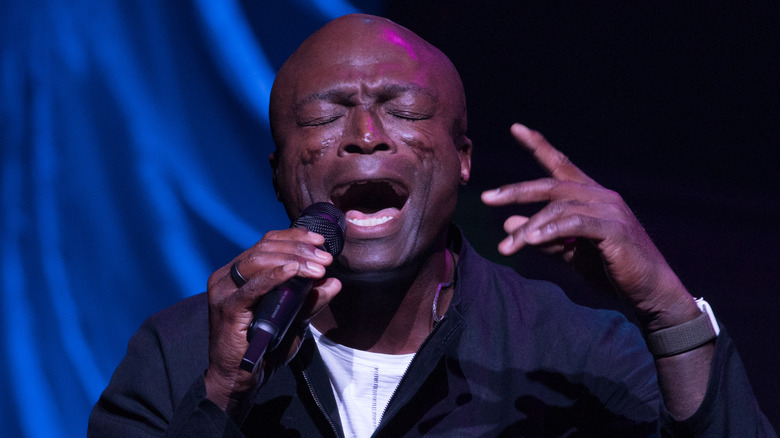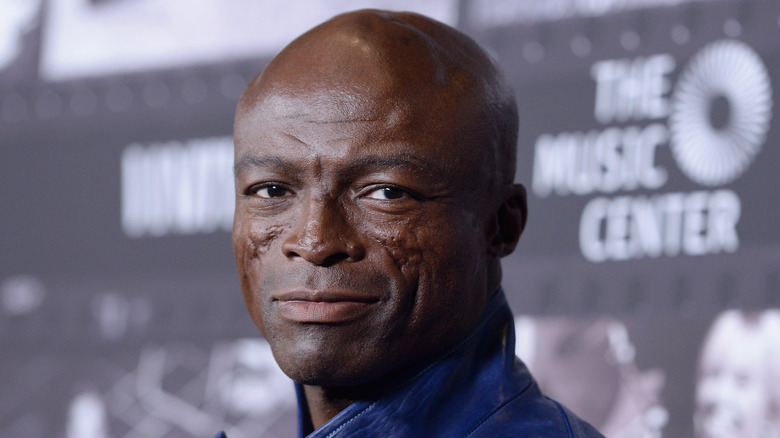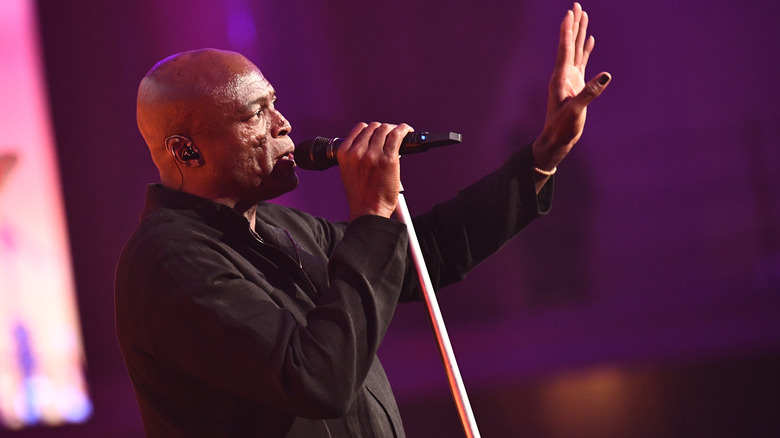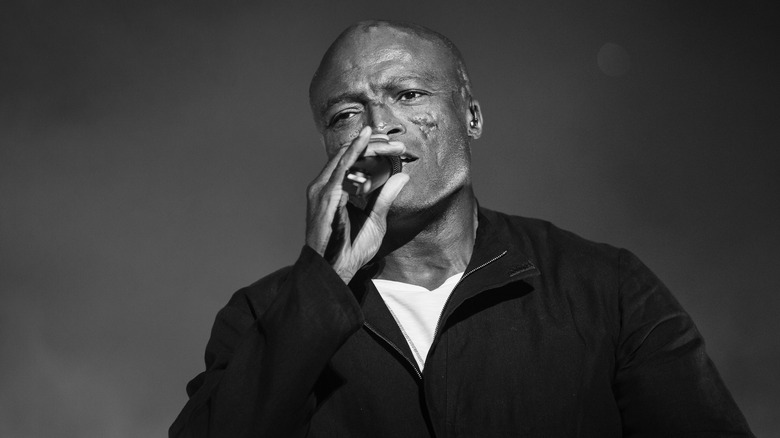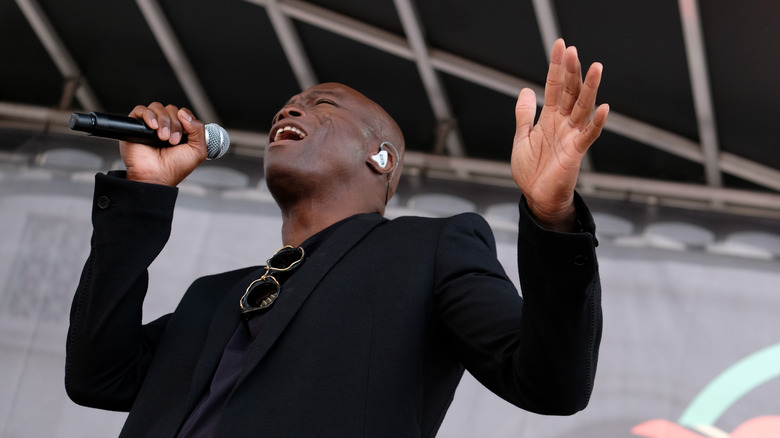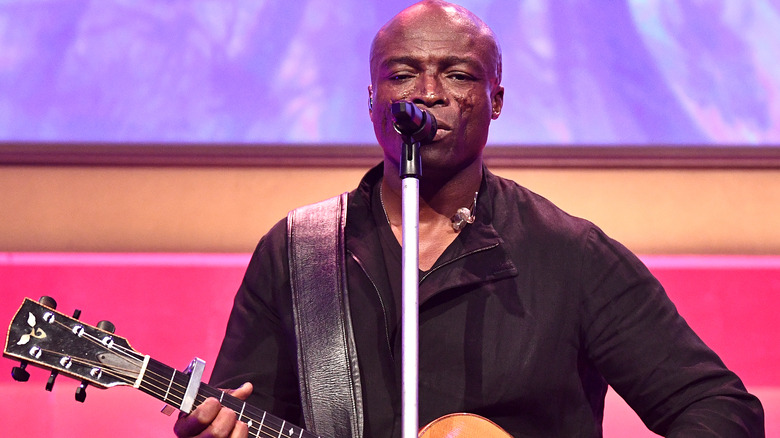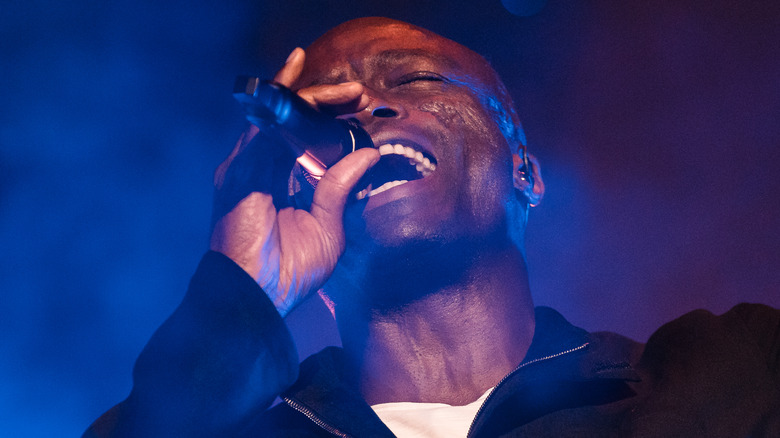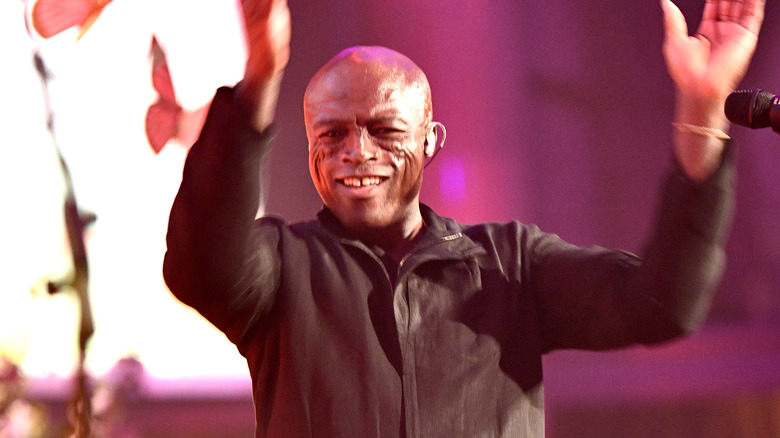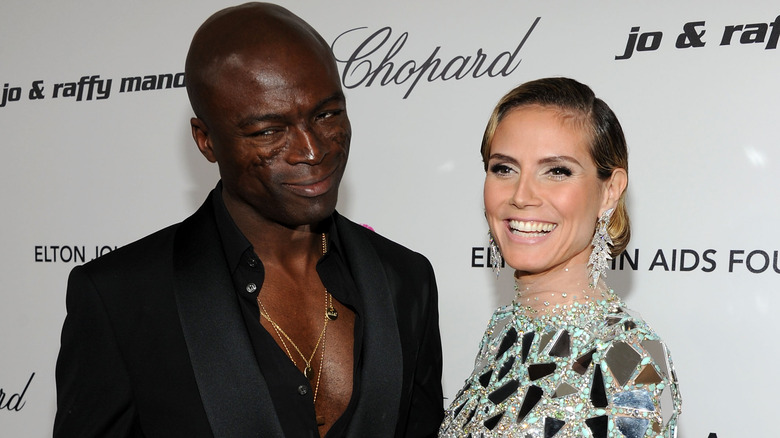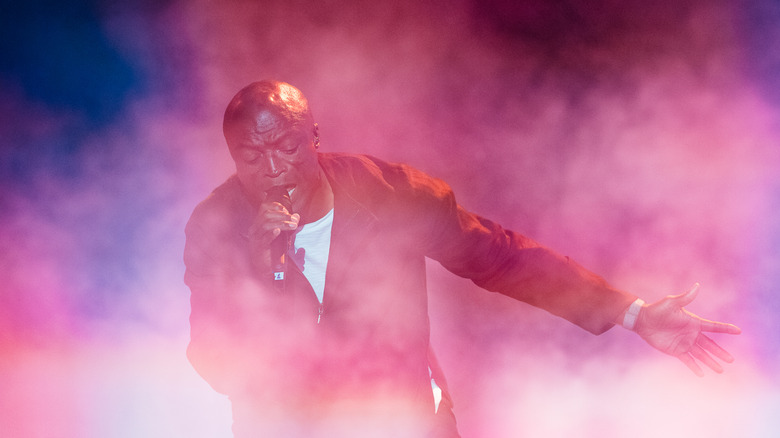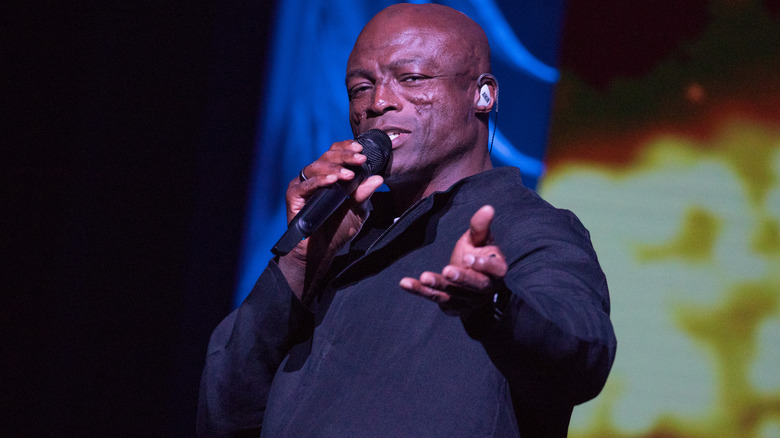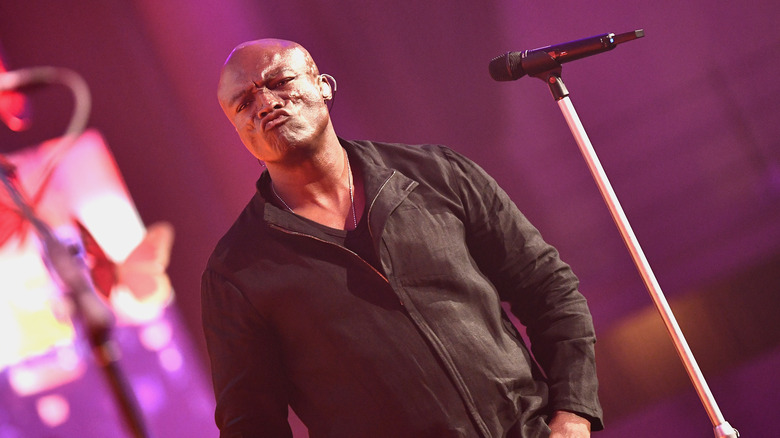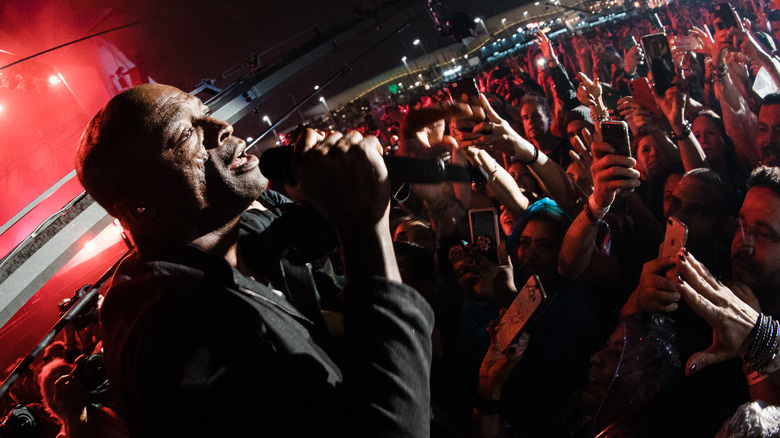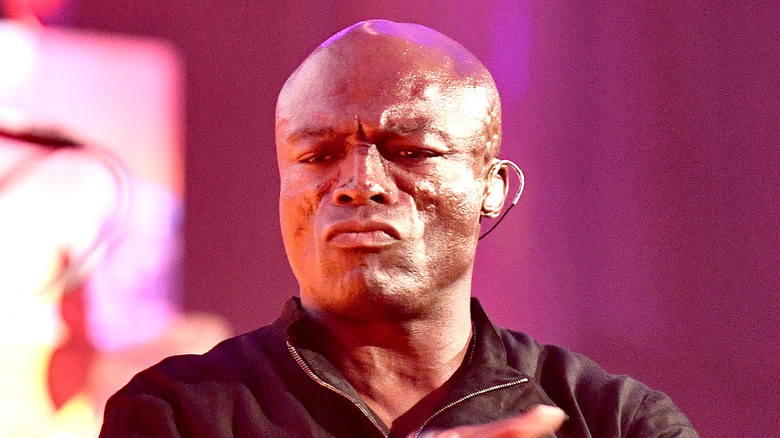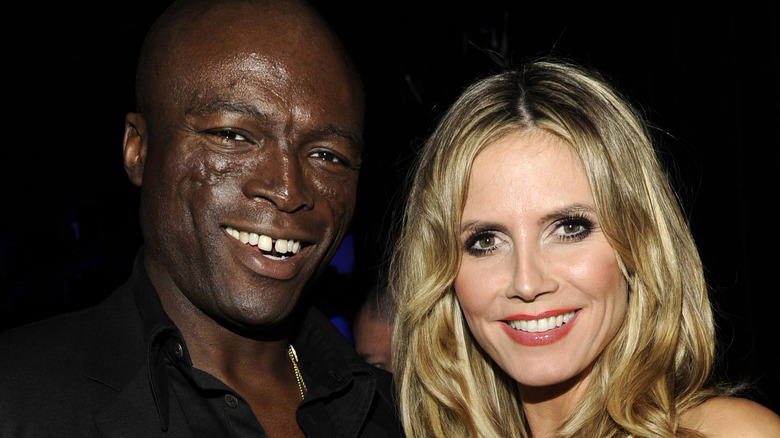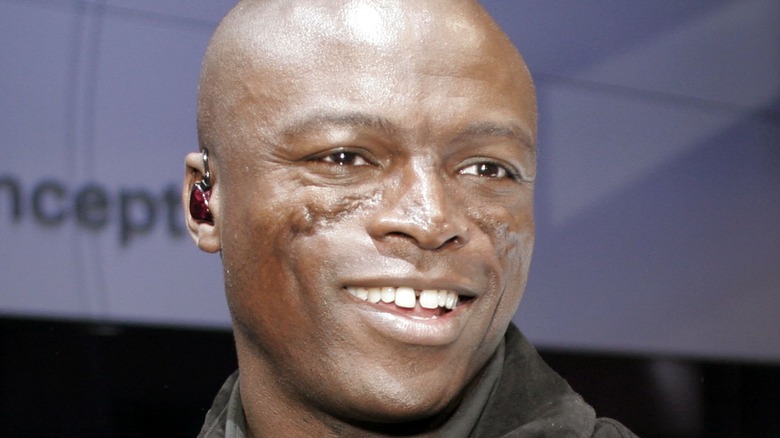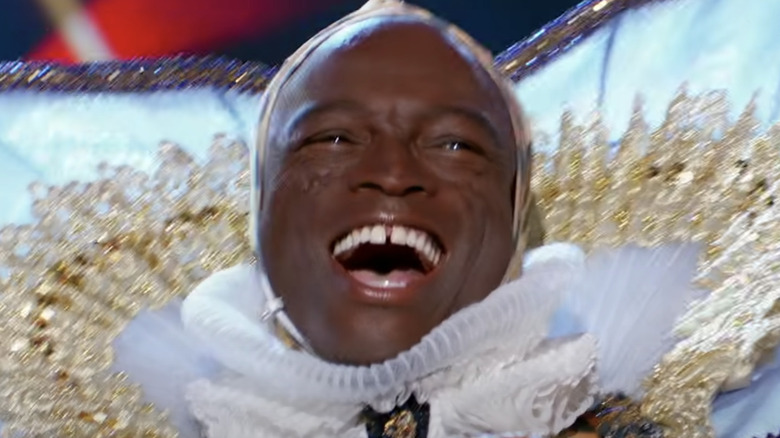Facts You Never Knew About Seal
Henry Olusegun Adeola Samuel, popularly known as Seal, is a British musician who has managed to appeal to millions of fans for his melodious voice and soothing singing style. He has sold as many as 20 million records globally. One of his most popular songs is "Kiss from a Rose," still celebrated for its easy appeal. Some of his other major hits include "Love's Divine," "Crazy," "Don't Cry," "Human Beings," and "I Am Your Man."
Seal didn't have it easy before he started his professional music career. He experimented with various jobs, such as working in a fast food eatery and trying to make ends meet as a bike messenger. In the 1990s, he made it big in the music scene, and after that, there was no looking back.
Seal has racked up several honors over the course of his career, including four Grammy wins and three Brit Awards, among others. Besides making music, the singing sensation has also served as a coach for participants on the Australian version of the TV show "The Voice." Seal has lived anything but an ordinary life. Here are some lesser-known facts about the musician's life.
Seal's childhood was unstable
Seal had a hard time as a child. He was born in London on February, 19, 1963, to parents of Nigerian descent, per Hello. His parents were struggling to put food on the table and decided not to keep their baby, handing him over to foster parents in Essex. However, when Seal was four, his mom came back into his life and forcibly moved him back to London. According to a New York Times profile on Seal, the singer didn't have a great relationship with his mother, who was sent back to Nigeria when he was six years old.
Following this incident, Seal started living at his dad's place. He was initially in awe of his father, who, unfortunately, seemed to dislike his son immensely. He often hit young Seal with items like belts and whips. He was a strict disciplinarian who hoped that his son would grow up to become a renowned doctor or lawyer. Seal eventually fled home as a teenager and only returned to take his dad's ashes back to Nigeria.
In an interview, Seal briefly reflected on his tough beginnings. "My childhood was fractured. It was filled with violence and abuse and a complete and utter lack of love," he stated. "I became a kid who lived in his head because I had to create an alternative reality for myself."
A teacher encouraged Seal to sing
While Seal's father was less than thrilled about his love for music and performing, an observant teacher noticed his talent and was keen on Seal honing it further. Inspired by his teacher's faith in his abilities, Seal decided to sing at a parent-teacher association event. He was only 11 years old, inexperienced but optimistic. His performance was a rather a cappella rendition of Johnny Nash's song, "Bright Sunshiny Day." According to The New York Times, Seal described this performance as simple and free of any frills, stating that it was "as 'fraidied up as you could get."
Seal's fascination with music led to more beatings from this father, who wanted him to focus on other goals. "My parents had never heard me sing before," Seal told The Guardian years later. "There wasn't a great deal of communication in the house. There was this really cool teacher who I idolised — I certainly didn't idolise my father — and he always used to say, 'You've got a really good voice'. I would never really take his word for it, but he got me to sing on stage. I remember closing my eyes and singing, and at the end of it, everyone's clapping, and I opened my eyes and there was a look of disbelief on my parents' faces. And at that point I knew."
Seal explored architecture before becoming a musician
When Seal was 17 and away from home, trying to figure what to do with his life and map the way forward, he decided to pursue architecture. He was hustling to get by but believed that his choice was better than going back home to his parents — even if it meant homelessness. Music was on the back of his mind, not something he could consciously chase. According to The Guardian, at that point, his singing was "sort of like the party trick that I would do when I was among friends. And I'd hear it every time, 'Wow, I never knew you could sing! You ever thought of doing that?'"
Seal only seriously considered making music at 23. His girlfriend at the time was convinced that he needed to put himself out there and bought him a guitar, a drum machine, and other equipment and told him, "That's what you should be doing. You're wasting your time. Get on with it."
Seal struggled as a musician
Even after he began to focus on making music, it took Seal some time to achieve a breakthrough. He was experimenting with his sound but knew his demos were failing to hit the mark. "The record companies would say the same thing, 'He's got an interesting voice, but I'm not quite sure what he is,'" Seal told The Guardian. "And they were right. I had no identity. I could sing, but I had no voice."
He was motivated by a friend to listen to different artists such as Jimi Hendrix, Led Zeppelin, and Sly and the Family Stone. Doing his research helped him hit upon an epiphany. "It became so apparent to me why I couldn't get signed, so I stopped writing music for a year," Seal explained. "I went out and bought everything those artists did, everything I could lay my hands on, and they became my Bible."
After his hiatus, Seal wrote "Crazy" and also toured with a funk band from London. The offer was tempting: decent money for four gigs in Japan. Seal agreed. "So I joined the band, just for two weeks," Seal reflected. "But then the keyboard player said, 'Let's stop in Thailand on the way back.' As soon as I set foot in Bangkok I just knew I wasn't going home." It would be another year before Seal would leave Asia. He spent his time performing with a blues band in expat bars and working on songs he planned to release in the future.
Seal's first big break came in 1990
Seal returned to the music scene in the West in 1989 and met DJ and music producer Adam Tinley, popularly referred to as "Adamski." The two met on New Year's Eve and decided to work together. Seal worked on "Killer" with Adamski, a song that smashed records far beyond their imagination. The track was at No. 1 for almost a month, and Seal was finally getting the attention and gigs he'd been searching for.
Seal got a deal with ZTT and started working with Trevor Horn, its founder and a respected music producer. Seal's work with Horn paid off, and he shot to fame. "If I was being brutally honest, then, yeah, I needed Trevor," Seal told The Guardian. "It would be foolish of me to say otherwise." He also reflected on the importance of being motivated while working on creating new music and not being dependent on others. "I've learned the hard way that the only person who is gonna make it happen is you, in the same way that I made the first album happen. Trevor produced a great record, but I tell you what, mate: I lived and breathed that first record. They used to have to send me home — I would fall asleep on the back couch in the studio. I wouldn't let it go."
Kiss From a Rose wasn't well-received at first
One of Seal's most beloved hits, "Kiss From a Rose," wasn't initially popular. What many fans don't know is that the song languished in obscurity after its initial release in 1994. In June 2020, Seal opened up about this to The Hollywood Reporter, talking about what gave the song momentum after its initial setback.
Film director Joel Schumacher discovered "Kiss From a Rose" and loved it so much that he decided to use it for "Batman Forever" in 1995. Schumacher first contacted Seal in his pursuit of a song for one of the scenes in the film. Seal's manager prompted him to suggest "Kiss From a Rose," which eventually made it to the movie's end credits and won many awards, including three Grammys in 1996.
Schumacher passed away in June 2020. Seal remembered the director in a moving video, stating, "I owe my career in large part to Joel Schumacher. I just want to say I love you Joel. Thank you very much for everything that you've done for me. One day, we'll all meet again back home."
Seal has lupus-induced scarring
Seal's face is distinctive for its scars, something he's been open about, though he was uncomfortable and self-conscious at first. "Something that had kind of been initially traumatizing turned out to be something that has made me instantly recognizable," he told Yahoo Lifestyle in an interview.
Seal has lupus, a chronic ailment that is known for causing inflammation and pain. In Seal's case, he's battled the disease, specifically discoid lupus, since his early 20s. "My lupus first arrived when I was 21," he said. "It's not as serious as systemic [lupus], which affects the organs." He added that he has gained perspective and looked at his illness in different ways. "I quickly realized this body is not who we are. I got off lightly," he added.
Seal learned to confront his hardships and stay optimistic despite the health issues he went through. "I believe that in all forms of art there has to have been some initial adversity: that is what makes art, as far as I'm concerned," Seal said to The New York Times. "And it's not something you outlive: once you experience it, it's always with you. It forms part of your makeup; probably it's the reason for your makeup."
Seal's proposal to Heidi Klum was rather grand
In 2005, Seal tied the knot with model Heidi Klum in Mexico. According to People, Seal worked hard on organizing a lavish proposal for Klum, popping the question in Canada on a glacier. "I proposed on Dec. 23 at 14,000 feet in Whistler, B.C., in uncharted terrain on a glacier, in a natural snow cave, in an igloo built just for the moment," Seal said. Klum was floored and said yes to the musician. The couple exchanged vows in a small ceremony at a lavish spot in Mexico.
Seal embraced Leni, Klum's daughter from another relationship, as his own and was super-excited about fatherhood. A friend of the couple told People, "He is crazy about Leni, he is always carrying her around. He is the first one to change a diaper." A few years later, Seal reflected on his relationship with Klum, telling The Guardian, "I got married at 41, which is a long time to wait in some peoples' eyes. But I was fortunate in that I could wait and make what I felt was the right choice."
Sadly, the couple filed for divorce in 2012, after seven years together, and the duo have had disagreements since. In August 2020, Klum filed a complaint in court in order to travel with her children to Germany. She said Seal had objected to her taking their four kids to Germany because of the COVID-19 pandemic.
Seal was criticized for performing at a dictator's party
A high-profile event that turned out to be a birthday bash for the head of the Chechen Republic, Ramzan Kadyrov, was attended by actors Hilary Swank and Jean-Claude Van Damme and also saw Seal making an appearance. International group Human Rights Watch criticized the stars for showing their support and attending the event. According to Billboard, the group asked the singer to explain why he'd agreed to perform at the party and told the celebrities to return any money they were given for the show.
Human Rights Watch issued a statement that read, "Ramzan Kadyrov is linked to a litany of horrific human rights abuses. It's inappropriate for stars to get paid to party with him. It bolsters his image and legitimizes a brutal leader and his regime. And getting paid to be part of such a lavish show in Chechnya trivializes the suffering of countless victims of human rights abuses there."
Swank decided to apologize for her actions, but Seal defended his attendance on Twitter. "By going there, I played MUSIC for the Chechenyan people. I'm a MUSICIAN and would appreciate if you leave me out of your politics," he lashed out in a tweet to a livid follower.
Seal has dealt with anxiety for decades
For Seal, mental health struggles are not unfamiliar. He first experienced anxiety and panic attacks in his 20s as he tried to come to terms with his fears of death and failure.
His first major panic attack came while he was in a music studio. "I was rushed to the hospital and I was convinced that I was dying, having a heart attack," he told Yahoo Lifestyle. Seal's mental health struggles have taught him to be more empathetic. "It's given me such empathy and understanding for people who can't get help," Seal said. "There is no shame ... there is no guilt in asking for help and talking about it, whether it's therapy or it's a friend. It needs to be shared."
For Seal, exercise and meditation have helped him feel more in control. Despite going through some tough experiences, he's grateful for all the lessons he's learned over the years. "I'm not sitting here crying about my lupus or anxiety," he said. "It isn't by chance that I just have a voice to sing that touches people. I believe that my purpose is communication. That is a blessing."
Seal prefers to distance himself from albums
In 2016, Seal revealed to Billboard that he wanted to focus on singles instead of fretting over albums. "I won't be making albums in the same way. I will be releasing songs," he revealed. "I think there's an immediacy and a freedom which comes with that, to release music as and when I see fit. The playing field is different these days. The concept of going into a studio for however long and making a concept album, so to speak, I don't know if that's relevant these days or if indeed that is practical to do. It's certainly not so effective."
He believes that a move like this helps artists to create fresh music instead of worrying about endless changes and refining music for an album. In 2019, the Sarasota Herald-Tribune asked Seal whether his views had changed. "I mean, I still believe in albums," he explained. " Albums full of good songs are what really changed my life, that's what inspired me to make music, but I just don't think the industry allows for that these days. I think the whole concept of locking yourself away for a period of time and spending a great deal of time, money and investment on making an album, and then sort of releasing it at the end of that and going ta-da — you're not dealing in industry terms." He added that it's far more practical to focus on a few songs at a time.
Seal has been very supportive of fans
Seal is more supportive of his fans than most people realize. During the COVID-19 pandemic, he has been actively engaging with fans on Instagram, viewing their updates and communicating with them. "Me looking at people's Stories, answering people or sending them a quick message, it's always coming from a place of love," he told The New York Times. "I'm not personally a fan of social media. However, there is one thing that it's great for, and that's for bringing people together."
Seal has been posting comments on thousands of posts and saying things like, "I see you," "I'm watching you," and "peace and love." Seal doesn't perceive himself to be a big deal but can appreciate why watching him proactively connect has made some fans so happy. "When they see people in the public eye joining them in their conversations, and that I've taken the time to see them, that can go a long way," he explained. "So if it makes them feel happy then I love that, then I'm happy, too." That said, Seal has a team helping him out, as the star isn't a huge fan of spending extended periods of time on social media himself.
What is Seal's net worth?
Seal has been a worldwide music star for about three decades, selling lots of albums and downloads and routinely racking up hits that still get substantial radio play and streaming listens. Two of his albums have been certified gold by the Recording Industry Association of America for sales of at least 500,000 copies in the U.S. alone, and two other Seal records have sold more than a million each. Seal has reached the top 40 of the American pop chart five times, including the No. 1 smash "Kiss from a Rose." In addition to his many lucrative, high-profile TV show appearances including the "The Masked Singer," and the Australian version of "The Voice," he boosted his bank account with a couple of major real estate deals.
In 2019, he put down $3.5 million for a mansion overlooking Malibu, California, (via Architectural Digest) a few years after he put on the market a home in Brentwood, California, he shared with former wife Heidi Klum for $24 million (per UPI). All of these financial streams add up in a big way: According to Celebrity Net Worth, Seal's net worth sits at around $40 million.
Seal married Heidi Klum again and again and again
In one of the most high-profile, celebrity power couple pairings of the 21st century, pop singer Seal married supermodel Heidi Klum in 2005, according to People. The happily-ever-after didn't quite last forever, with the two separating in 2012 and finalizing their divorce in 2014. Nevertheless, Seal and Klum really tried to make things work, it would seem. They tried to recapture the magic of their wedding day by repeating it, renewing their vows with annual regularity. "I think I got married eight times to Seal," Klum told the Sunday Times. "I thought it would be kind of, like, fun. I thought it would be a fest of love."
Those vow renewal ceremonies became as lavish and major an event as an actual wedding. In 2010, Seal and Klum celebrated their fifth anniversary with a re-do nuptials on a beach in Costa Careyes, Mexico (per People). It was a tradition that Seal increasingly didn't enjoy. "It kind of turned into a little bit of a circus, which I wasn't terribly fond of," Seal said on Andy Cohen's radio show (via BestLife) after he divorced Klum. "I'm, you know, by default, I'm quite a private person."
There's a lost Seal album
Seal's fourth full-length album, "Seal IV," hit stores in 2003, but his previous attempt at record number four fell apart. According to Dan LeRoy's "The Greatest Music Never Sold," Seal began work in 2001 on an album titled "Togetherland," purportedly a stab at sophisticated, adult-oriented pop-rock influenced by the artist's thoughts and feelings as he was about to celebrate his 40th birthday. The individual tracks were widely varied, with Seal taking on R&B ballads, acoustic folk-rock, soulful belting, propulsive and electronics-driven dance music, and radio-friendly soft rock. In September 2001, Seal played a concert and included in the set list a "Togetherland" track called "Love is Better," then talked up the album to reporters. "It's an album that tries to promote the concept of togetherness and love and acceptance," he told liveDaily, and added that the record was nearly finished.
Seal had been given free creative reign by an executive at Warner Bros. Records, but a new team was installed during the recording of "Togetherland," and they didn't like the record. They hired early Seal collaborator Steve Fitzmorris to remix it, and Seal set about writing entirely new songs. Some of the musicians who'd worked with Seal on the record then left over a pay dispute, and "Togetherland" never came together. Warner Bros. took it off its release schedule and canceled a support tour. In 2010, Seal tweeted, "'Togetherland' will never see the light of day whilst there's blood in my veins."
When Seal was a leopard
A couple of years after the release of his 2017 album "Standards," Seal made a grand return to the public eye in a big way, appearing on one of the hottest TV shows of 2019 — he just did it in secret, or he tried to, at least. During the second season of Fox's singing competition show "The Masked Singer," in which celebrities wear elaborate, identity-concealing costumes, perform music and invite a panel of judges to speculate on who's behind the mask, Seal made it all the way to the semifinals under the guise of the Leopard. To help further avoid anyone guessing it was really him inside the regal cat costume, Seal took on the persona of a purring, flirtatious, playful rogue, and sang songs outside the usual soft-and-cool Seal wheelhouse, performing Katy Perry's "Teenage Dream" and fun's "We Are Young."
Seal made it almost all the way to the "Masked Singer" finals because the quality of his singing kept the advancement votes coming; the judges, and some outside parties, figured out the Leopard was Seal pretty easily. "When I stopped disguising my speaking voice in episode three," Seal told Billboard, is when his children solved the mystery. Show judges Robin Thicke and Nicole Scherzinger also correctly surmised the man inside the Leopard, a costume picked so as to be a subtle clue. "We thought we'd stay along the animal theme — you know, Seal, Leopard," Seal explained.
